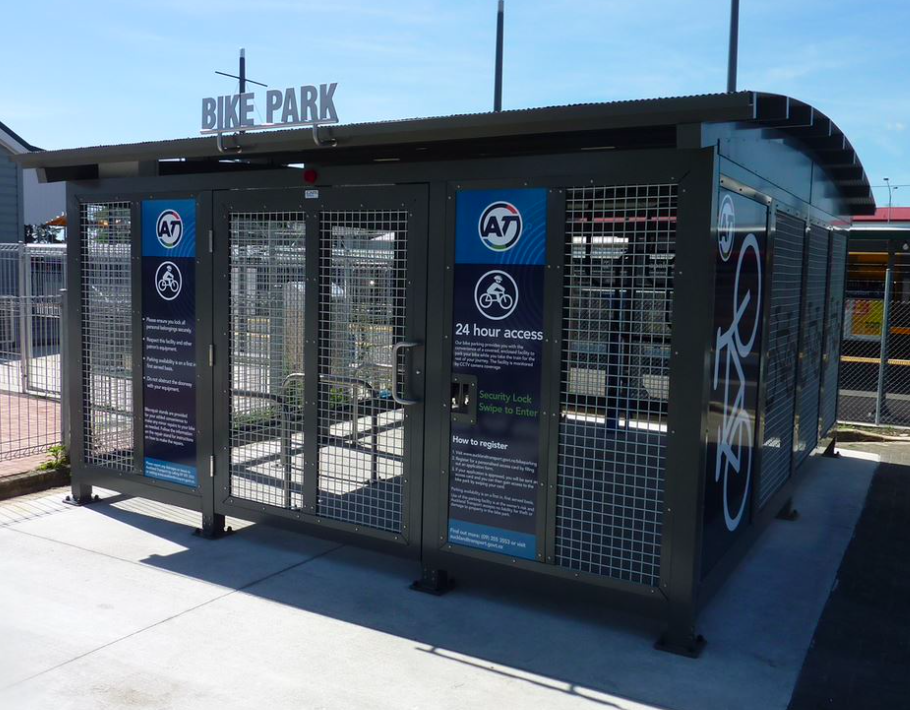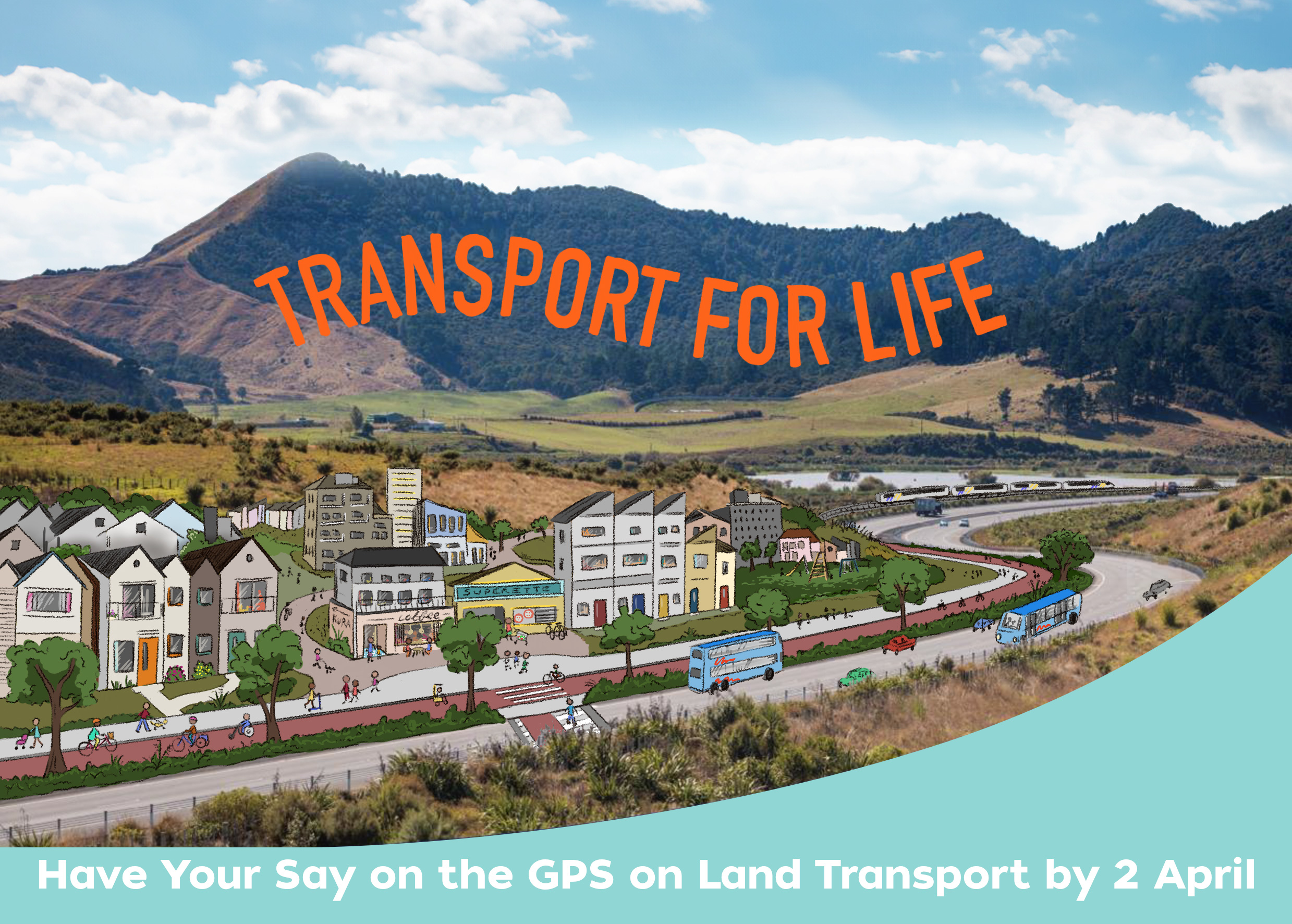Thanks to Shaun Baker, an urban planner with experience working in transport planning and resource management, for letting us share this article.
One of my favourite ways to explore our cities is by public transport and bike. During my adventures, I discover the city’s landmarks, public art, new developments, and recent additions to our transport network, all while enjoying breathtaking views of the city and our natural environment. Exploring the city by train and bike is not only a great way for transport nerds like me to get to know the area better, but it’s also an excellent opportunity to learn about our urban environments and identify areas in our transport network that needs improvement to enable more multimodal journeys in Aotearoa New Zealand.


Enabling multimodal trips provides more sustainable options for the first and last leg of a journey, such as feeder buses or active modes. We need improved active mode and public transport connections to major stations to reduce short distance car trips and alleviate pressure on existing park-and-ride facilities. More people travelling to their local train station or interchange by public transport, walking, or cycling also reduces the need for additional park and rides. Park and rides are expensive to build, maintain and can result in poor land use outcomes around our public transport stations. This can create barriers to transit-oriented development, limiting opportunities for housing and employment built close to stations.
There are several things that can be done to encourage more multimodal trips. One way is to provide safe cycling connections to stations and interchanges. An example of this here in Tāmaki Makaurau Auckland, is the Links to Glen Innes Cycleways project. The projects consists of a series of separated cycleways (currently at various stages) that connect Glen Innes and the neighbouring suburbs of Glendowie, Wai o Taiki Bay, and Point England to the town centre. Currently, the cycleway on Point England Rd is under construction and the cycleway on Taniwha St had recently been completed. This project aims to create connections to the Glen Innes train station where cyclists can transfer onto trains and buses. The project also includes improvements to the walking environment, with new raised pedestrian crossings and upgrades being made to existing crossings.


Improving the walking and cycling environments makes travelling to your connecting bus or train by active modes more safe, accessible and attractive. To improve connections for pedestrians, disabled people, and those with prams. We need more wider footpaths, raised pedestrian crossings, and rearranging kerbs at intersections to improve accessibility. These improvements alongside building separated cycleways does more than improve safety and accessibility to those travelling to or from the station. They also help support trips made within the local neighbourhoods (eg:to school, community facilities and other local amenities).
Another thing that’s important for cyclists is having secure bike parking when arriving at the station. Bike theft is a concern for cyclists with 500 – 1000 bikes reported stolen each year in Tāmaki Makaurau and concerns about not having sufficient bike parking available can discourage people from cycling, especially those who have had their bike stolen in the past. Having a good bike lock and signing up to schemes like 529 Garage can help mitigate this. Having a secure place to park their bike is at the top of people’s list to reduce their concerns. However, some stations do have sufficient bike parking available or is substandard like wheel-benders which only secure the front wheel but not the frame, making the bike still prone to theft. Vertical bike racks, which are common in bike parking facilities are not suitable for heavier and larger bikes (eg: e-bikes, trikes and cargo bikes.)

The preferred type of bike stands to provide are Sheffield stands. These stands which allow for the security of both the frame and wheel of the bike, functional, able to be used for all types of bikes. Also, providing covered bike parking at to protect their bikes from the elements, either by bike cages at suburban stations or providing indoor bike parking at major interchanges, similar to bike parking provided at stations in the Netherlands.


Another thing that can be implemented to provide safe bike parking and providing bike and scooter hire is micromobility hubs. These can give people who just hopped off or heading to a bus, train or ferry the option to travel to and from their destination by bike or scooter, especially for those to do not own a bike or are visitors to the area, which can enable more multimodal trips, as discussed in this video by YouTube channel: Oh The Urbanity.

In Tāmaki Makaurau, The University of Auckland is collaborating with Beam: a bike and scooter hire provider and Big Street Bikers: which delivers bike racks accessible by an app or smart card known as Locky Docks. to have a 6-month trial of micromobilty hubs at train stations with the first one at Glen Eden, with e bikes and scooters available to hire and covered e bike and scooter parking.

Providing feeder public transport services is another important piece needed for creating more multimodal trips. To make feeder buses more attractive, they should run frequent throughout the day to support growing communities, to be timed to be at interchanges to allow for enough time for passengers to transfer onto their connecting services and quick and easy transfers at interchanges.
As part of the Northwest Bus Improvements, which went live last month, two new bus routes were introduced: Route 13 (Te Atatū Peninsula to Henderson Station) and Route 14 (New Lynn Station to Lincoln Bus Interchange). These routes run every 15 minutes from 7 am to 7 pm, providing frequent bus connections to Te Atatū, residential and business developments along Lincoln Rd and Waitākere Hospital. Passengers from the 13 and 14 can transfer onto the WX1: an express bus service from Westgate to the city centre at Te Atatū Road and Lincoln Road interchanges (respectively) at the Northwestern Motorway. The WX1 runs every 10 minutes from 7 am to 7 pm. Both routes connect to train stations at Henderson, with Route 14 also connecting to New Lynn train station.


Interchanges must be easy to navigate around so people can get to their connecting service. By integrating the bus platforms into the train station like at Ōtāhuhu Station, creating easy transfers onto feeder buses compared to when the bus interchange was located 1km away from the station at Ōtāhuhu Town Centre. Also, ensuring that wayfinding at stations and interchanges is easy to understand, especially for visitors, residents who are unfamiliar with the station and for blind and low vision passengers.

For those who wish to take their bike on the train or ferry. Stations need to be easy to get around with their bike without experiencing any issues such as big and wide lifts, wide fare gates etc. Once on the train or ferry, there needs to be places to store their bike during the duration of the journey. While you can take your bike on the train and ferry in Tāmaki Makaurau, the storage areas available can only accommodate a limited number of bikes. Some train carriages can accommodate more bikes as they have larger bike storage areas, which will be great to see rolled out onto more trains and more space will be available for bikes on the new low-emission ferries that are currently under construction, with one ferry to have space for up to 28 bikes. The first two low emission ferries is expected to arrive in 2024.


Installing bike racks in front of buses is another great way to enable multimodal trips, especially in areas where the public transport network is largely bus-centric. Bike racks are currently available on most urban bus networks throughout Aotearoa.

The implementation of these can help unlock multimodal journeys being done to get around our cities and making sustainable transport choices for the first or last leg of peoples journey more attractive to reduce short distance car trips and reliance on park and rides. Wherever it’s travelling to work, accessing major amenities or exploring the natural and built environments in our backyard.




